
— Kris Ashton
When the second-generation Mazda BT-50 ute first appeared in 2011, it was a collaboration with Ford (which sold its version as the Ranger). Mazda changed horses in 2020, basing its third-gen ute on the Isuzu D-Max. Those underpinnings have sustained the BT-50 for another five years until January this year, when Mazda announced the first real upgrades to its urbane commercial workhorse. The changes are largely cosmetic, however, and with key rivals lifting the bar for performance and technology in recent times, improved looks might not be enough to sway buyers in the BT-50’s favour.
With this update, the 2025 Mazda BT-50 model list comprises 15 variants, from the single-chassis 4x2 with 1.9-litre turbocharged diesel engine for $36,400, all the way up to the dual cab pickup SP 4x4 with a 3.0-litre turbocharged diesel engine for $71,500.
The base model single chassis XS is the only variant with the smaller engine – all others get the 3.0-litre.
This makes even the most expensive BT-50 pretty keenly priced. The SP is about $3000 less than the comparable Ford Ranger Wildtrak 4x4 ($74,840) and Toyota HiLux GR-Sport 4x4 ($74,310).
Our test vehicle was the mid-spec BT-50 XTR dual cab pickup ($62,750), which sits just below the SP and GT top-spec models. It was, however, optioned with a sports bar ($1587) and black alloy wheels ($2720), lifting the total cost to $67,057 before on-roads.
While exterior changes have freshened up the BT-50’s road presence (see below), the same can’t be said for the interior, which is hard to tell apart from the same model five years ago.
That said, Mazda interiors always present as well-built and the finishes and materials in the BT-50 speak of quality, from the leather on the dashboard, door handles, centre console and in small strips on the otherwise fabric upholstery, to the soft thunk as you close the door.
Nothing about the BT-50 feels coarse or utilitarian, save for the manual handbrake. The row of silver air con switches beneath the touchscreen are a practical inclusion and serve to elevate the colour palette, which remains rather subdued.
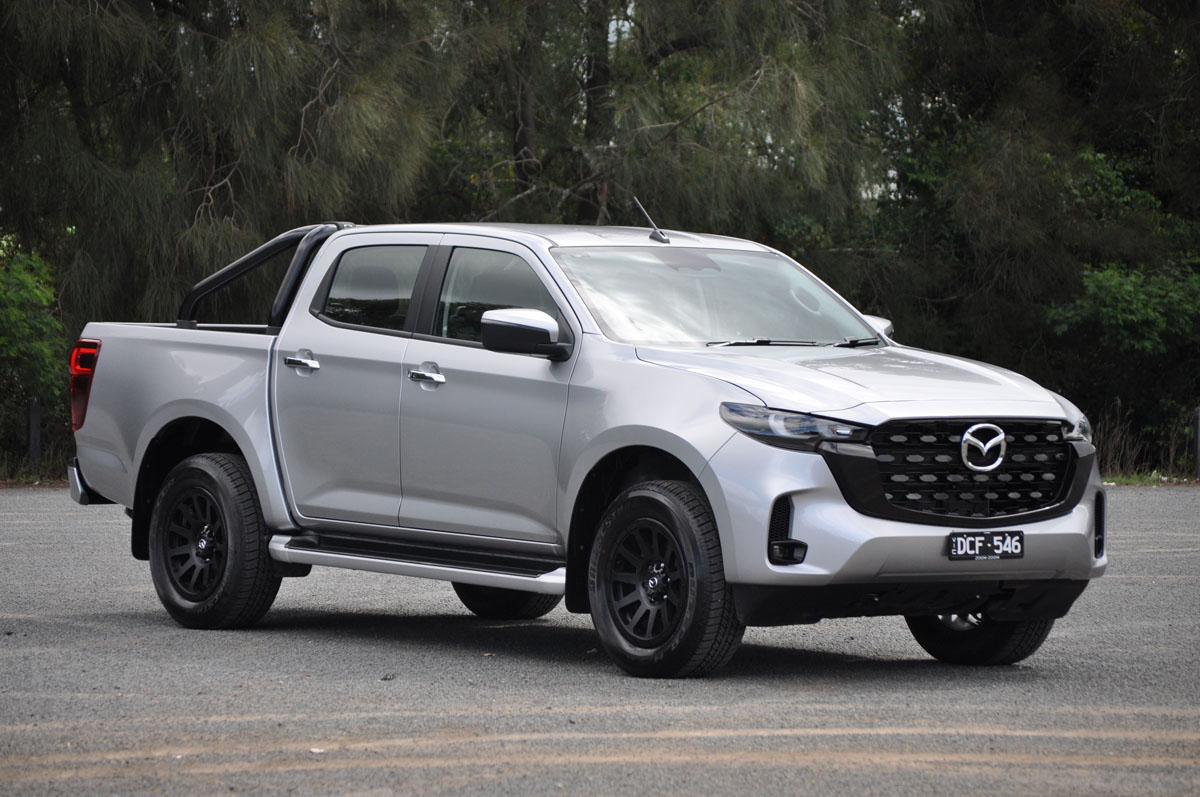
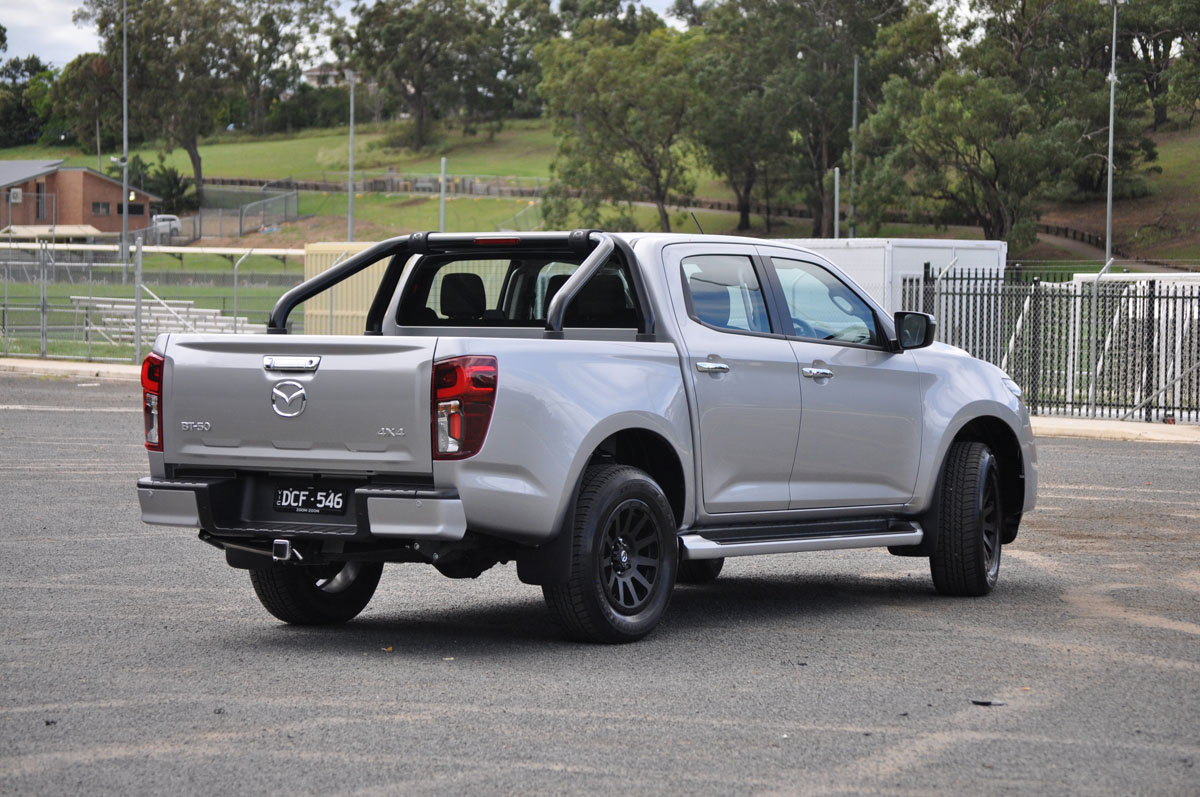
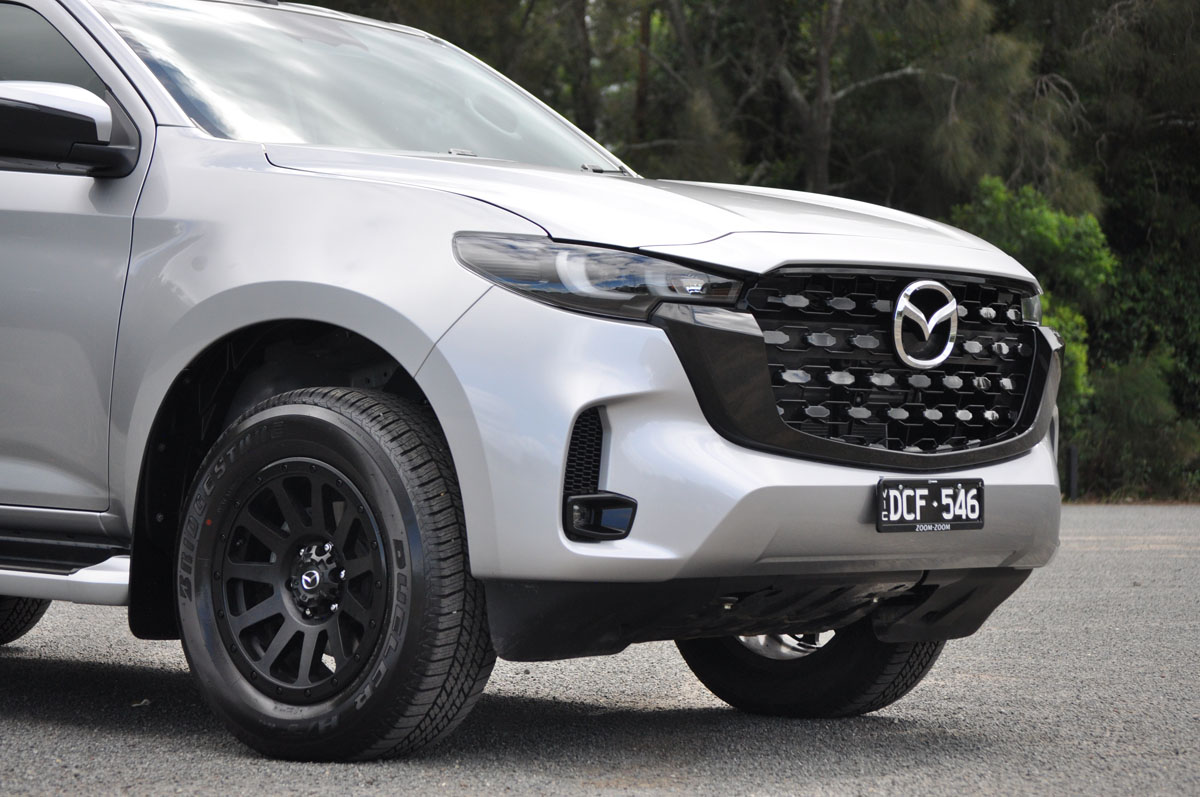
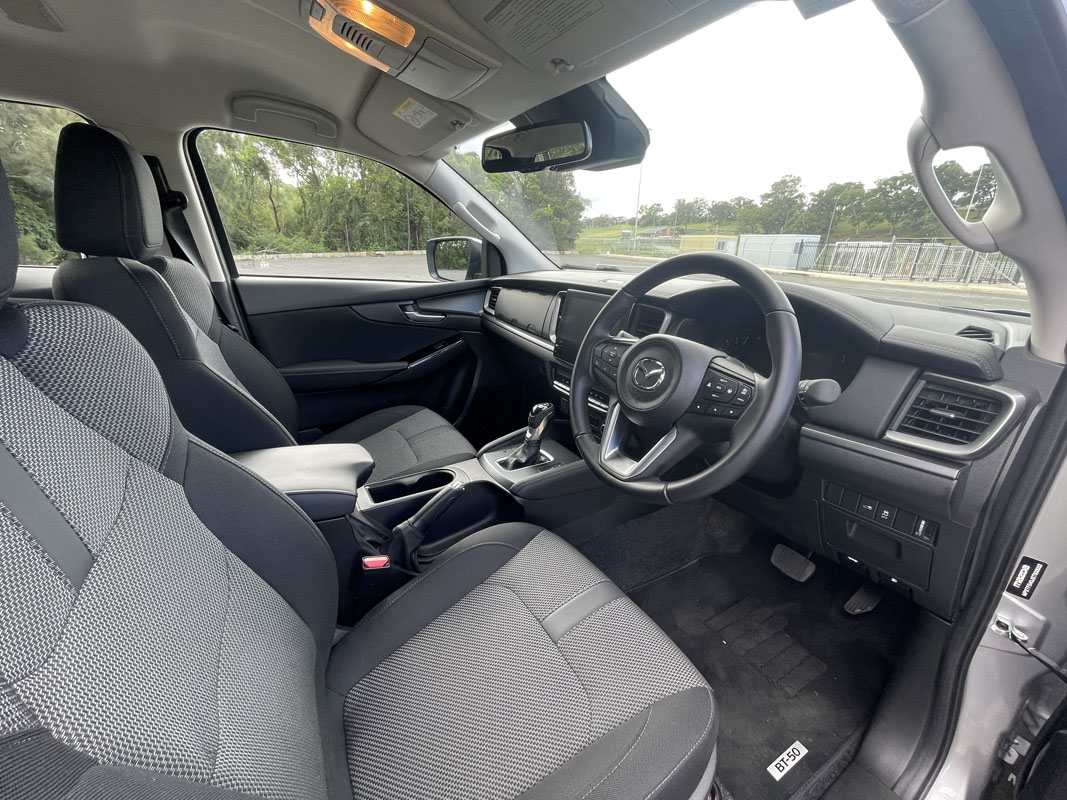
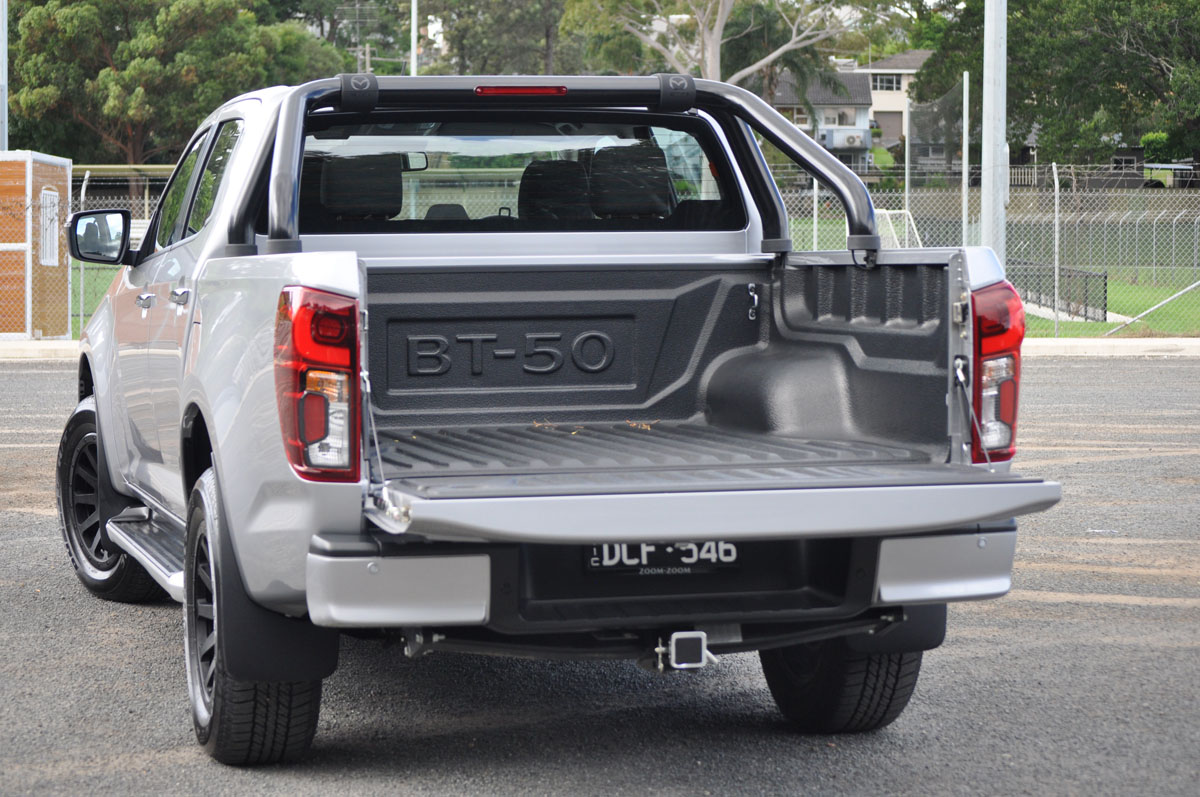
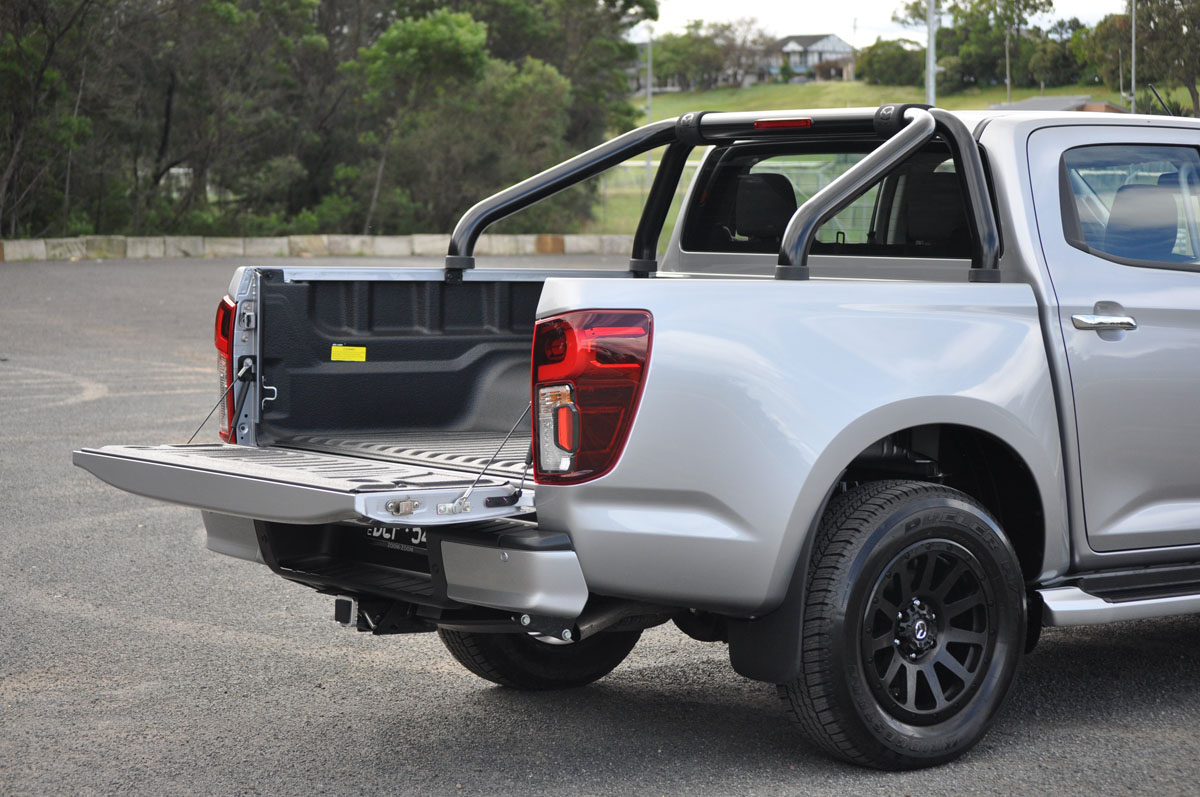
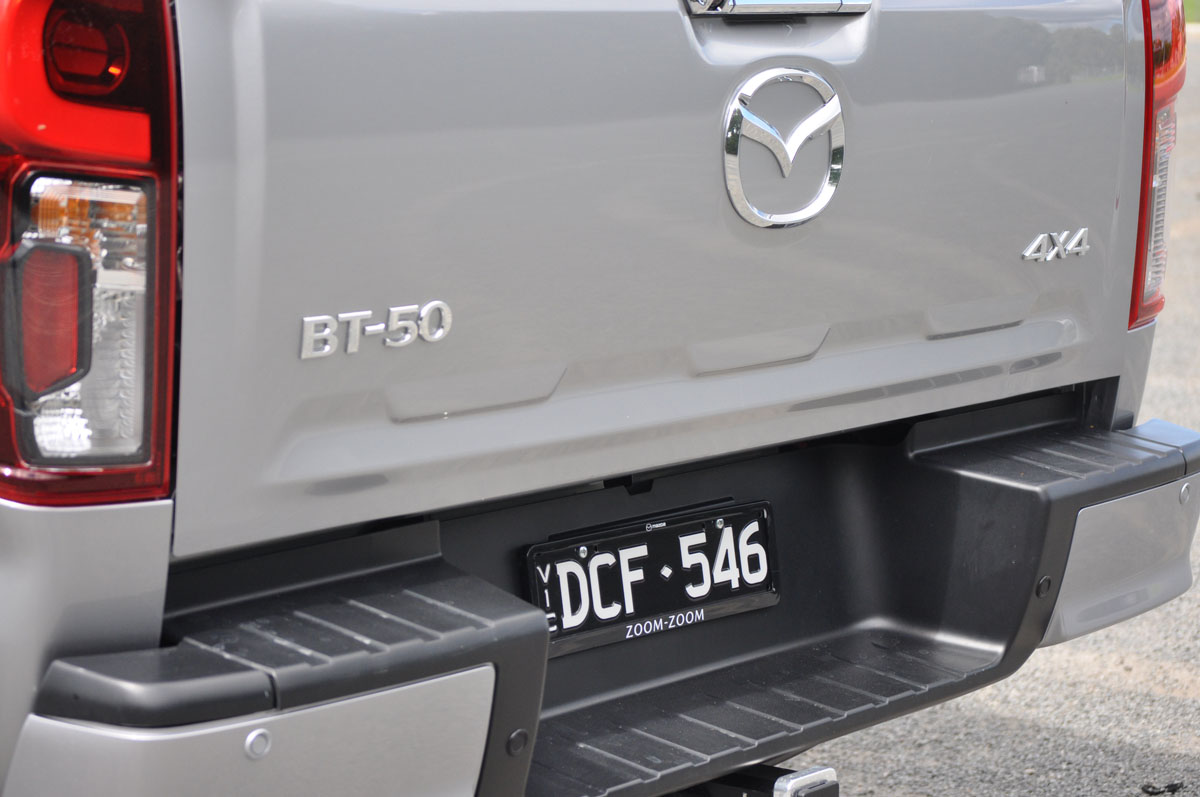
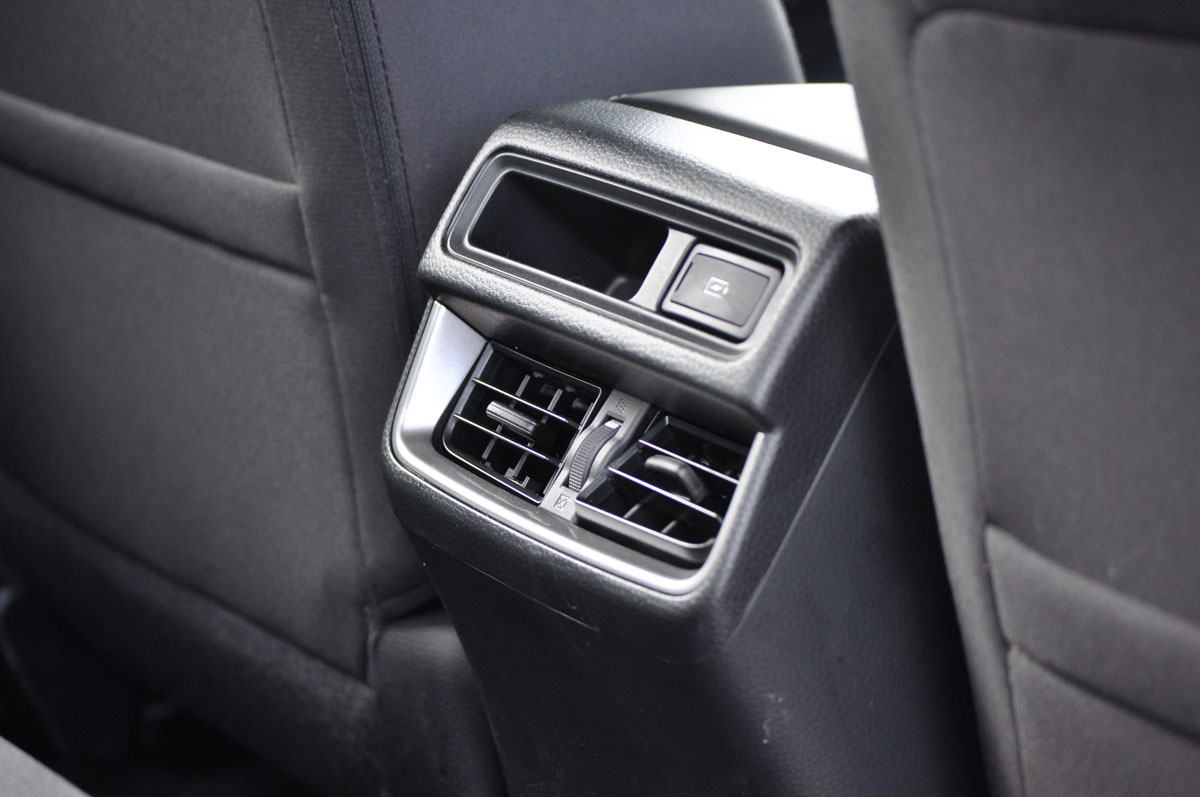
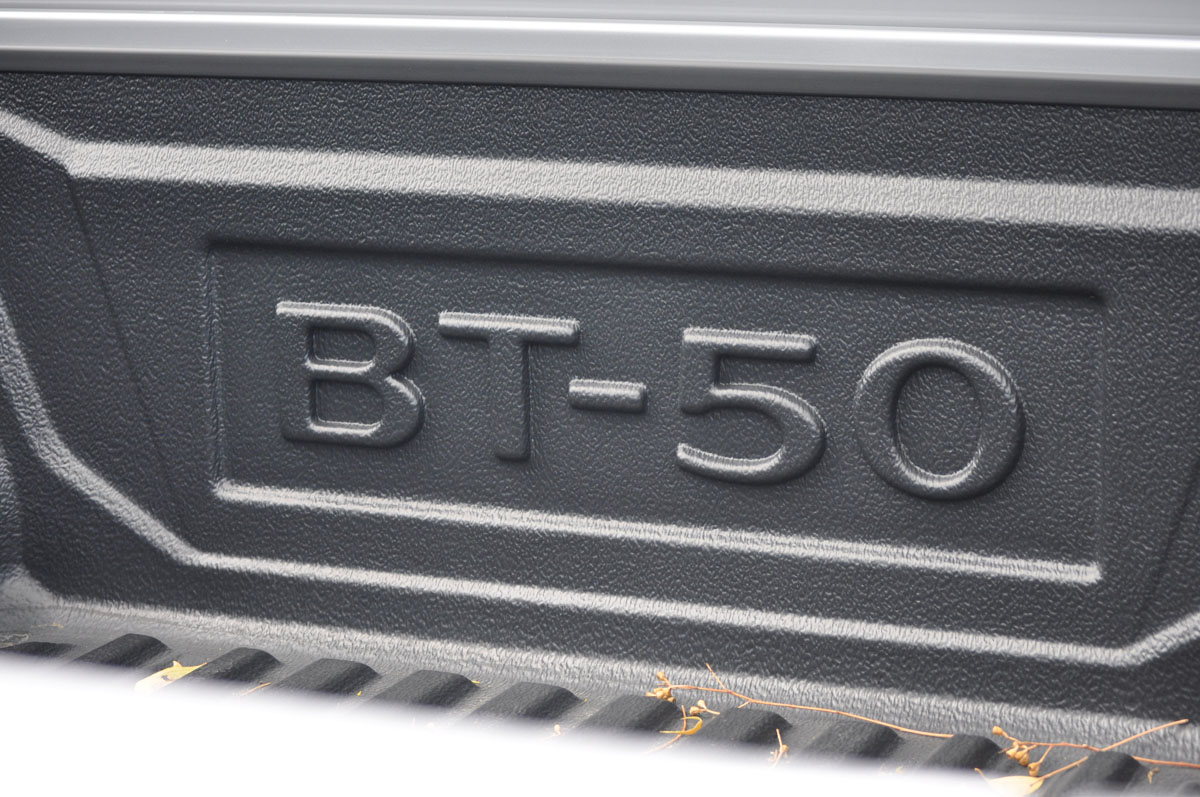
The front seats are comfortable, albeit on the firmer side compared to the Ford Ranger or Mitsubishi Triton.
The nine-inch touchscreen still has an odd ‘retrofitted’ look and the driver’s display, while larger than the old version at seven inches, has old-looking graphics. The same is true of the reversing camera image on the main screen, which offers nowhere near the resolution one might expect at this price point.
For a while, too, the infotainment system in our XTR showed the current track playing in text but displayed the cover art from the previous song. A minor quibble, perhaps, but it doesn’t help quell the conviction the BT-50’s infotainment tech is long in the tooth. The audio offering is better, with eight speakers dotted around the XTR’s cabin, including two in the roof.
To power devices up front there is one USB-A and one USB-C port, plus a 12-volt, 120-watt power socket. While there are a lot of storage options, including two glove compartments, they’re all on the smaller side.
Leg and foot room in the rear are unexpectedly shallow and six-footers won’t have much in the way of head room, either. There’s just a single USB-C port to service rear passengers, although they do get two air conditioning vents. Built into the back of the front passenger’s seat is a fold-away hook on which you can hang a bag or coat, while the fold-down centre armrest sports two cupholders.
It’s the usual child restraint situation found in dual cab utes – two ISOFIX attachments in the seat bases and a single anchor point at the top of the middle seat to service tether restraints. The rear seats are quite flat and firm and probably wouldn’t be a wonderful place to sit for a three-hour drive.
The mid-range XTR model we road-tested comes standard with 18-inch alloy wheels, LED headlamps with auto-levelling, powered folding side mirrors, side steps, daytime running lights, keyless entry and push-button start, dual-zone climate control, a nine-inch infotainment touchscreen, seven-inch driver’s display, wireless Apple CarPlay/Android Auto, satellite navigation and digital radio.
The BT-50 is available in Ice White Solid, Red Earth Metallic, Sailing Blue Metallic, Concrete Grey Mica, Ingot Silver Metallic, Geode White Pearl and True Black Mica.
This updated BT-50 brings carries over the five-star ANCAP rating awarded back in 2022. In addition to eight airbags, it has just about every safety gizmo under the sun, including automatic emergency braking, blind spot monitoring, forward collision warning, lane departure warning, lane keeping assistance, rear cross traffic alert and speed sign recognition.
This safety equipment goes about its business unobtrusively – all, that is, except the forward collision warning, which is far too sensitive, flashing a red line of lights on the windscreen and beeping hysterically in situations that don’t warrant it.
Aside from the base model, which gets a 1.9-litre turbo-diesel four-cylinder (110kW/350Nm), all BT-50 variants share the 3.0-litre single-turbo diesel engine (140kW/450Nm) that also powers the Isuzu D-Max ute.
Both engines are mated to a six-speed automatic gearbox. These powertrains remain unchanged from the pre-facelift BT-50 and the 3.0-litre has a 3500kg braked towing capacity.
When this generation first came out, it looked as though someone had stuck the nose of a CX-9 SUV onto the body of a BT-50 ute, but a new front bumper, radiator grille, and LED headlights and taillights combine to make it look more cohesive and up to speed with current styling trends.
Keyless entry and push-button start are not always guaranteed in the ute market, even at this price, so it’s nice to have both as standard in the XTR. The steering wheel’s smooth leather is also luxurious rather than rugged and it’s only when you fire up the engine and it rumbles the BT-50 on its springs that you remember there’s a sizeable diesel donk under the bonnet.
Quite a bit of engine noise and vibration permeate the cabin – yet another factor of this ute’s age, perhaps. In addition to a dial with high and low range, the BT-50 has buttons for hill descent control, rough terrain and diff lock.
Whereas the the Ford Ranger, Nissan Navara and Mitsubishi Triton now have twin-turbo diesel engines, the BT-50 still makes do with a single turbo. This means a touch more turbo lag in certain situations than competitors, but the 140kW/450Nm output keeps it up near the head of the pack for torque – and those who tow or carry heavy payloads will tell you a more sedate and progressive power delivery can be preferable.
The six-speed automatic gearbox is a proven and predictable unit that co-operates well with the engine. While cruising at lower speeds it keeps revs just above idle – terrific for fuel economy, we saw 10.7L/100km from almost exclusively urban driving – but it does delay throttle response should you need sudden acceleration.
Mazda has historically opted for a slightly firmer ride in its vehicles, and that holds true for the BT-50. It’s compliant rather than cushioned over bumps, and it probably wouldn’t be the first choice for a drive along a rutted road between Wilcannia and Menindee, but on regular suburban streets it’s composed and car-like and less fidgety than many competitors.
Our test model was fitted with 18-inch gloss black wheels (an extra-cost option) and Bridgestone Dueler highway tyres, suggesting a more urbane target market for the XTR anyway.
Gas struts for the tailgate debut with this facelift and make for much more pleasant opening and closing. The tray includes ‘BT-50’ embossed in the back of the boot liner and four tie-down points.
Evidence of Mazda’s superior build quality and attention to detail is everywhere and, if you want a reliable hauler that will go forever while offering a sense of luxury, the BT-50 should be your first port of call.
The market has altered dramatically in recent years, however, and while these upgrades have improved the BT-50’s looks, they can’t disguise its advancing age.